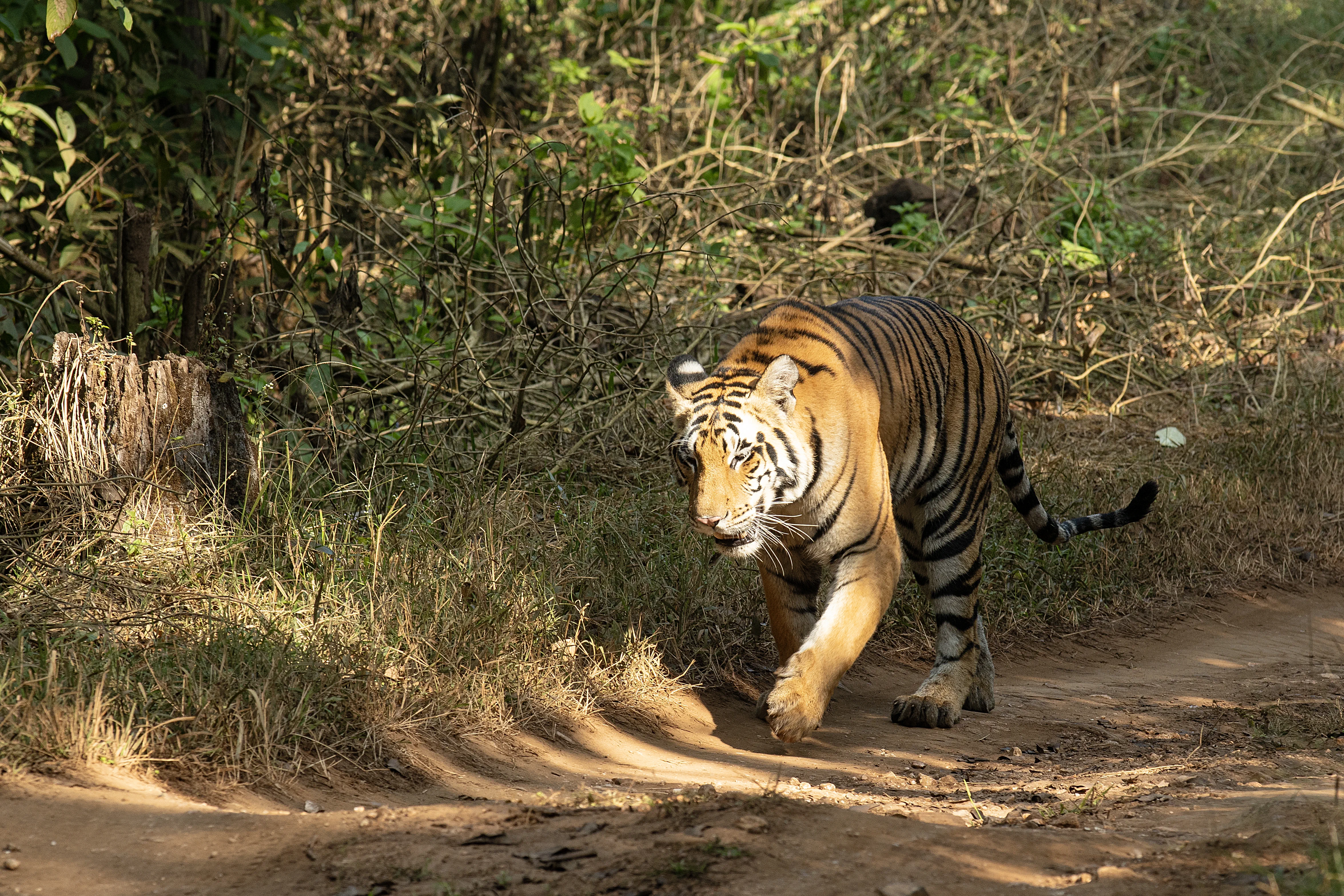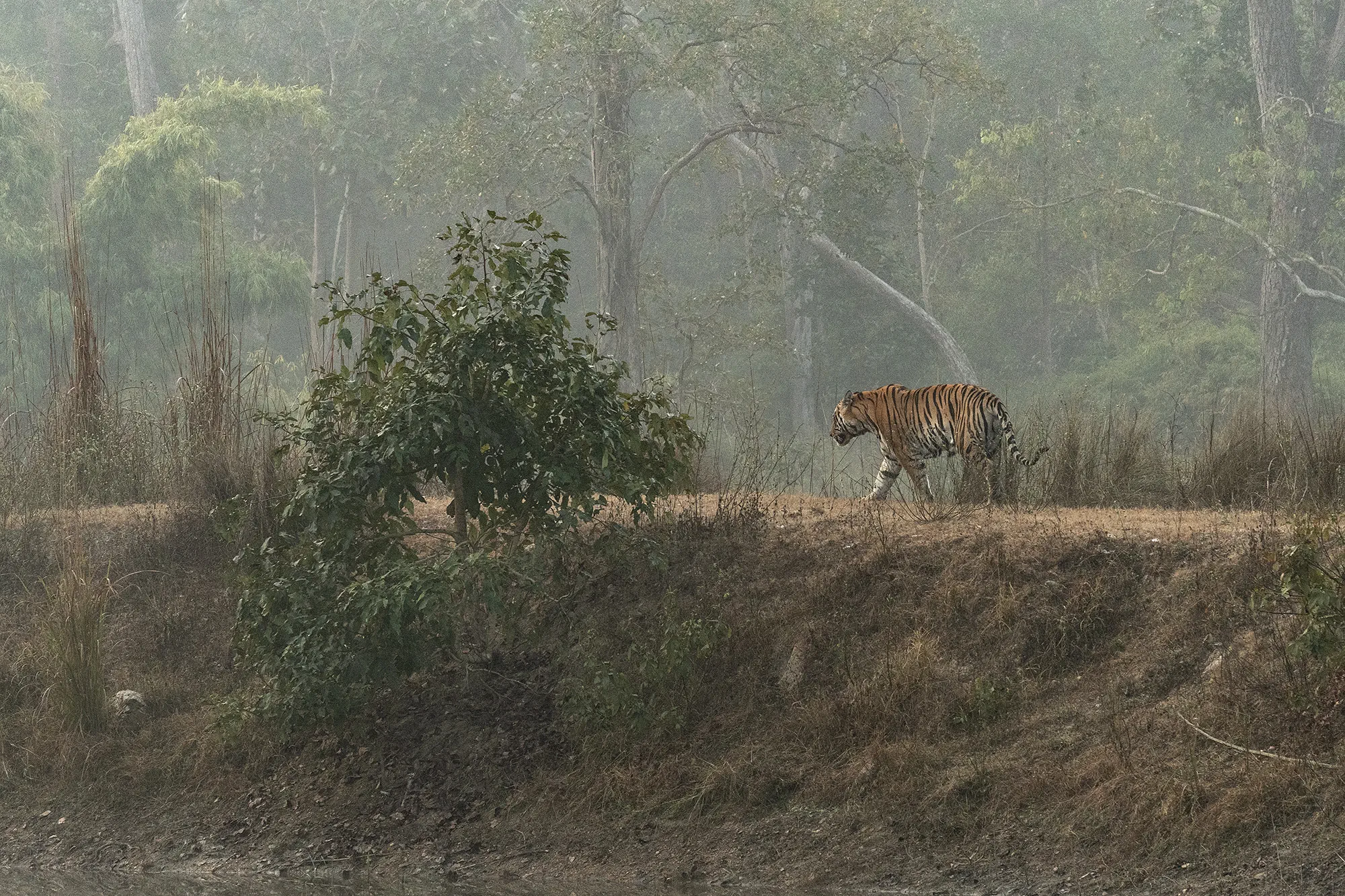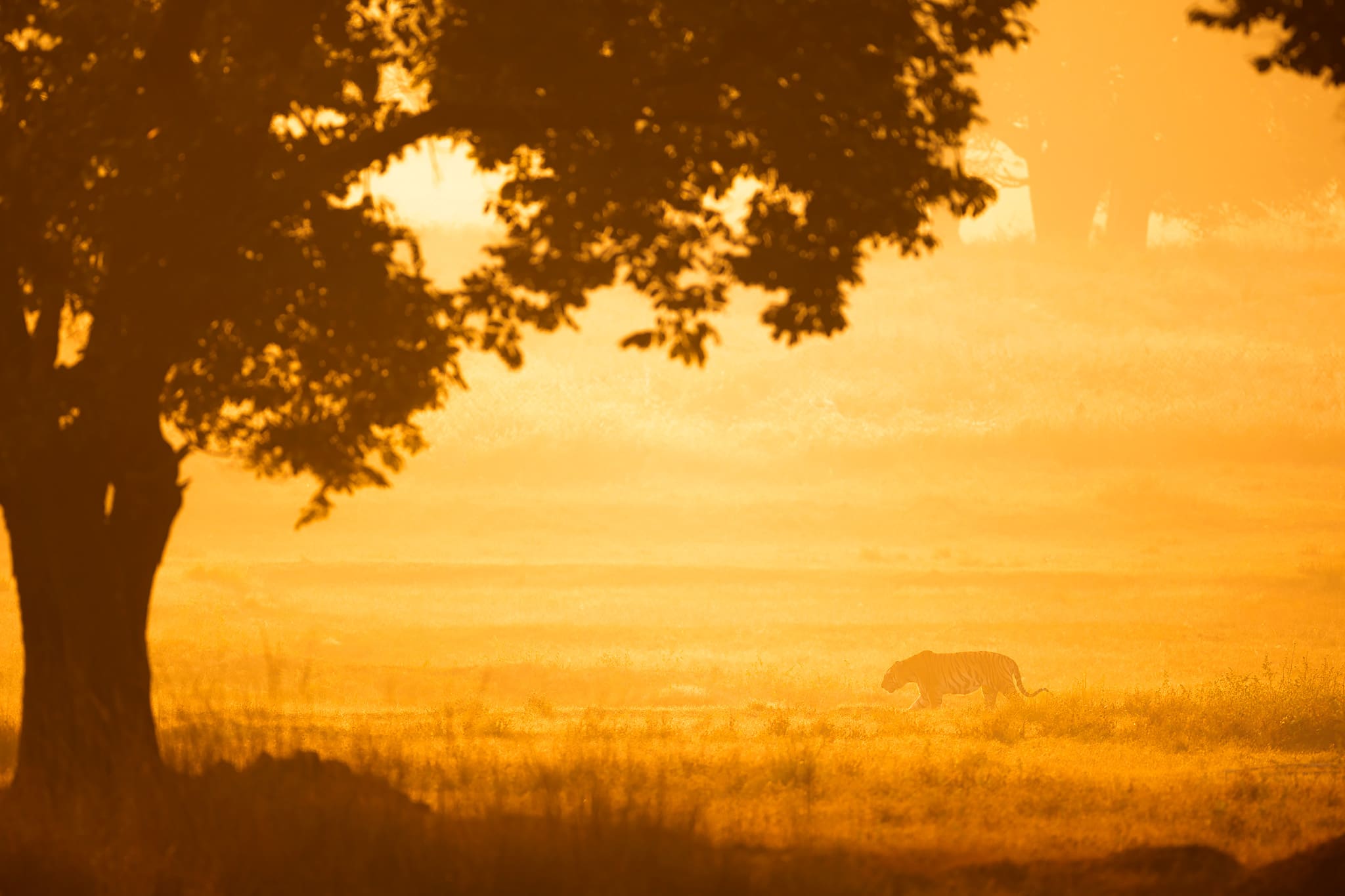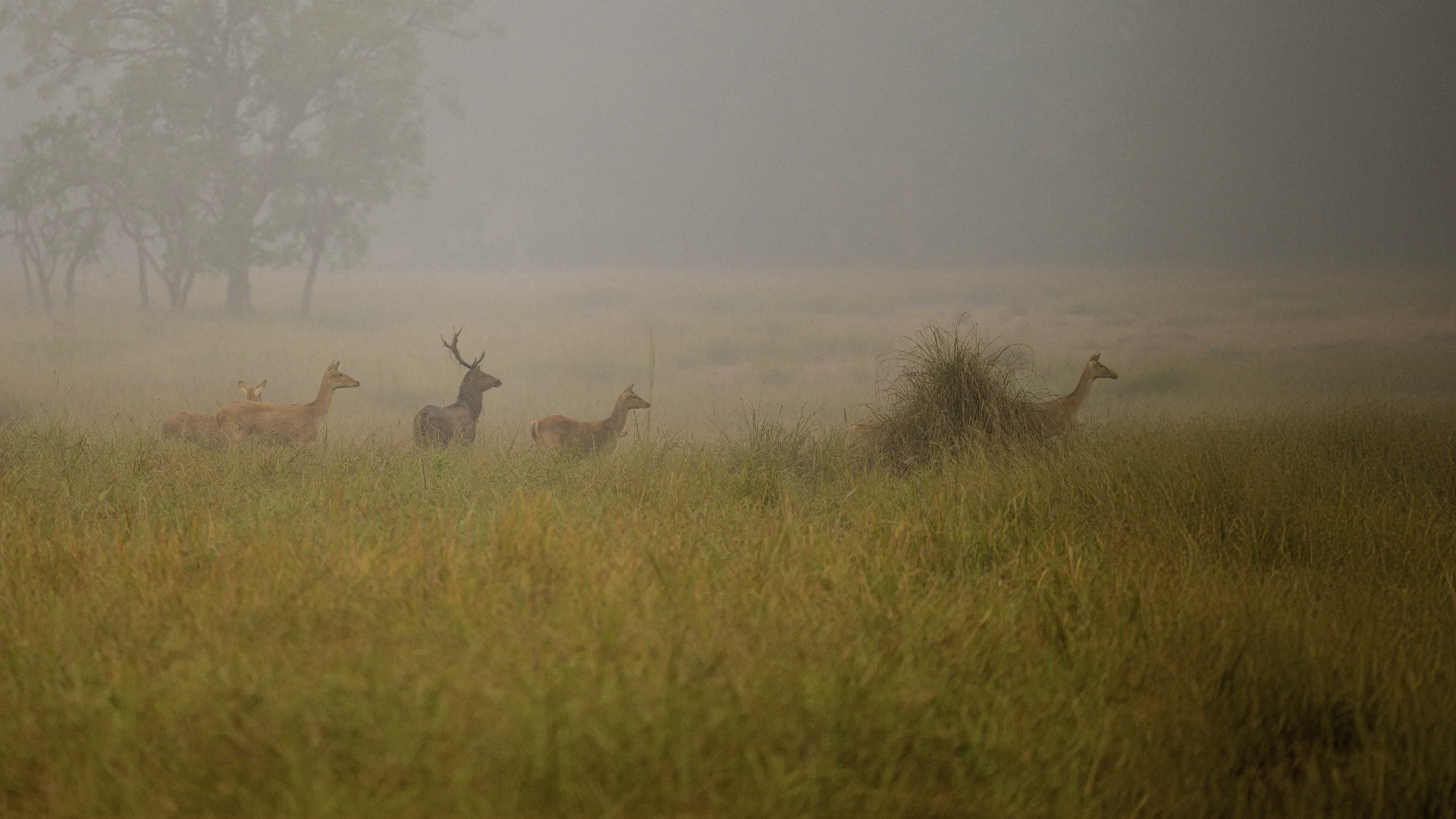
Best months to see tigers in Kanha
A Naturalist's Guide from Outpost 12
The soft rustle of sal leaves, the distant alarm call of a chital, and a flicker of gold and black in the undergrowth - these moments define Kanha. It is a dream sighting to see a Tiger walking among the Sal trees with morning light filtering through the jungle or a Tiger walking towards your jeep on a jungle road.
At Outpost 12, our naturalists often say that tiger sightings are as much about timing and patience as they are about luck.
If you're planning your Kanha safari, here's your complete guide to the best time of year to witness the majesty of India's most iconic predator.
February to May - the Peak Sighting Season

Summer is when Kanha reveals its wild secrets. Months of February and March are when patterns of Tiger movement starts to get more predictable and this sets the tone for the soon approaching peak summer months of April and May.
- Water sources shrink, so tigers often linger around the nullahs, waterholes and the waterbodies of Kanha.
- Visibility improves as the forest thins and the dry season begins.
- Morning safaris (5.30–11.30 AM) - early mornings are good for tracking pugmarks and fresh trails. Later in the morning, one might find Tiger heading towards the water hole.
- Afternoon safaris (3-6 PM) are best for finding tigers approaching or in the water holes.
- Chances to witness territorial fights between tigers.
At Outpost 12, our naturalists prefer early April - May mornings — when humidity is low, light is golden and there is active tiger movement in the core zones.
October to January — The Lush and Photogenic Season

Post-monsoon, Kanha transforms into a vibrant green world. Nullahs are still flowing, grasslands are lush with tall grasses and undergrowth is thick with vegetation. Sighting Tigers in the morning safaris with all this background drama is a blessing.
- New Tigers can be expected in the tourism area of the Park as the season opens after a three month break.
- Birdlife is better as the jungle teems with the presence of residents and arrival of migrant species. Barasingha rutting calls from December are a treat to hear during safaris.
- Active but elusive - Big cats are often elusive due to dense vegetation and ample sources of water in the jungle.
- Tigers are more active during the day this time of the year looking for mates and marking their territory.
- Misty mornings and soft light is a blessing for photographers.
Our naturalists suggest combining safaris with nature walks and wilderness drives around Tilari village, where animal calls and tracks tell quieter stories.
July to October — The Park's Resting Heart
Kanha's core zones remain closed during the monsoon (July–September). The buffer zone is still open to visitors. Morning, afternoon and night safari options are available in the buffer during this time. Tiger sightings take a back seat during this time.
It is one of the most beautiful times to experience Kanha's beauty. Innumerable shades of green, overflowing nullahs and a flowing Banjar river invites you to soak in Kanha in its unfiltered best.
The Best Zones for Tiger Sightings
Kanha is divided into several safari zones. While tigers roam freely across all, some zones consistently reward patient observers.
- Kisli Zone: Closest to Khatiya gate near to which Outpost 12 is located. Offers a variety of landscapes to look for big cats.
- Kanha Zone: Ideal for landscapes and photography. Grasslands are great places for spotting tigers.
- Mukki Zone: Known for frequent sightings of tigers near waterholes.
- Sarhi Zone: Remote and peaceful, great for birders and gives a good sighting chance for big cats in the grasslands.
- Khatiya Zone: Night drives offer good chances to spot Tigers and nocturnal wildlife.
Our naturalists track zone-wise movement patterns weekly and assist guests in choosing the right permits.
Beyond Sightings — The Spirit of the Jungle
Seeing a tiger is unforgettable, but understanding the ecosystem is equally magical.
At Outpost 12, our team encourages guests to appreciate:
- The symphony of calls - deer, langurs, peacocks, raptors and shamas.
- Active herds of Barasingha gracing the meadows.
- The tree variety found in Kanha
- The role of grasslands and rivers in maintaining the tiger's habitat.
- The insect biodiversity and their role in the ecosystem.
- The human stories of Baiga and Gond communities who live in harmony with this land.
- Role of the Forest Dept of MP in active conservation of the Tiger Reserve.
Our Naturalists believe a strong understanding of how the ecosystem works helps in appreciating every creature's contribution in sustaining it. May it be a Tiger, spider, orchid or a grass.
Follow Durgesh Singh - @dkinwild


